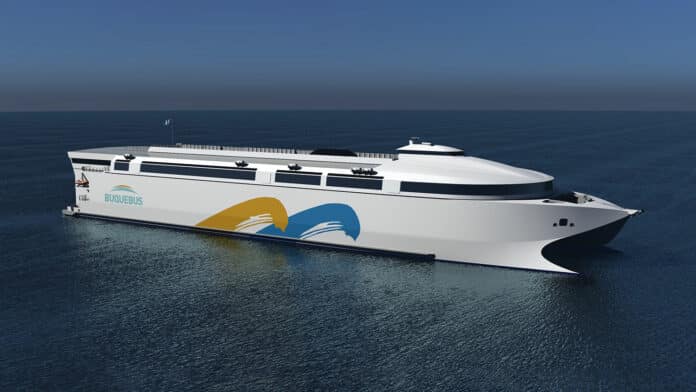It is no secret that the promises of electrification have long convinced the automotive industry. With government policies supporting net-zero carbon emissions, more car manufacturers are embracing electrification. And now, they are slowly taking over other industries as well, including aviation and shipbuilding.
Large ships powered by batteries and electric motors seem no longer just a theoretical concept. In fact, it’s quickly becoming a reality!
Australian shipbuilder Incat Tasmania, for a while, has been working on something it promises to be the largest lightweight battery-electric ship so far constructed in the world. The ship will serve the needs of its South American customer, Buquebus, starting sometime in 2025.
The world’s largest battery-electric Ro-Pax ferry will be 100% battery-electric. The aluminum-constructed vessel has a hull 130 meters (426 feet) long. It will have the capacity for 2100 passengers and crew, 225 cars, and a 2000 square meter Duty-Free Shop, all housed on one level.
The ship will hide in its bowels a battery pack with a total storage capacity of 40 MWh. It will be the largest battery system installed onboard a ship – four times larger than any battery installation that has been constructed and installed anywhere in the world for the marine transport environment. The batteries power a series of E-motors, which drive the water jet propulsion system. The electrical system integration is by Wärtsilä, and ESS is by Corvus Energy.
Incat is now working toward the construction of its second but smaller battery-electric vehicle/passenger ferry.
“The build of the Buquebus ship is leading the world in this type of ship construction and will have leading-edge technology in terms of zero emissions propulsion and storage systems. Once in operation, the shore-side charging systems will have 50% more capacity than any current installation worldwide,” Incat Managing Director Craig Clifford said in a statement.
This vessel will be the largest of its type with the highest ESS capacity, and it will also have the longest zero-emission journey at the highest speed, and it will be charged with the world’s highest capacity chargers.
